
"helm of awe drawing" Greeting Card by Hunrech Redbubble
Medieval attestations of the object Völsunga saga. A physical object called the "Helm of Terror" is referenced as one item Sigurð takes from Fafnir's hoard after he slays him in Völsunga saga.. Reginsmál. In the prose of Reginsmál, Fáfnir is described as owning the helm and that all living creatures feared it.. Fáfnismál. The object is also discussed in Fáfnismál in the Poetic Edda.
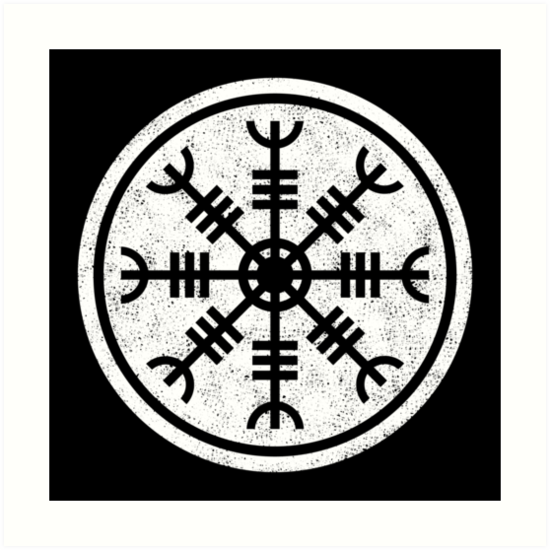
"Helm Of Awe" Art Print by piedaydesigns Redbubble
The Helm of Awe. The name itself sounds remarkable and powerful. Yet it is known by a range of other names such as the Helm of Terror, Aegishjalmur, and the Viking Compass.It sounds as though it is an object that should be venerated and is one of the most mysterious and powerful symbols of Norse mythology.. But what exactly is the Helm of Awe and what has it come to symbolise?

"helm of awe drawing" Art Print for Sale by Hunrech Redbubble
Aegishjalmur (Helm of Awe) Symbol Meaning. The Nordic symbol Aegishjalmur is commonly believed to be a symbol of courage, protection, and strength. Often worn by Viking warriors by drawing it in the space between their eyebrows, this symbol is said to ensure victory against their enemies.
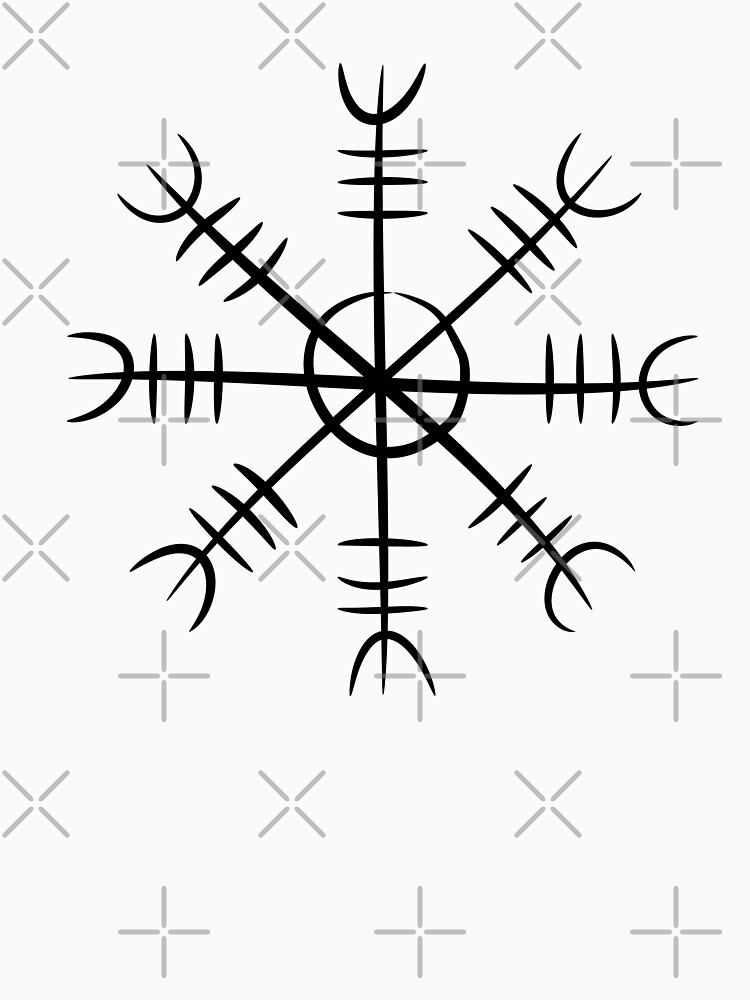
"helm of awe drawing" Tank Top by Hunrech Redbubble
Full editable collection of norse symbols with meanings like protection, love, healing, safe travelling, compass, good luck, brave or courage and more. Find Helm Of Awe stock images in HD and millions of other royalty-free stock photos, 3D objects, illustrations and vectors in the Shutterstock collection. Thousands of new, high-quality pictures.
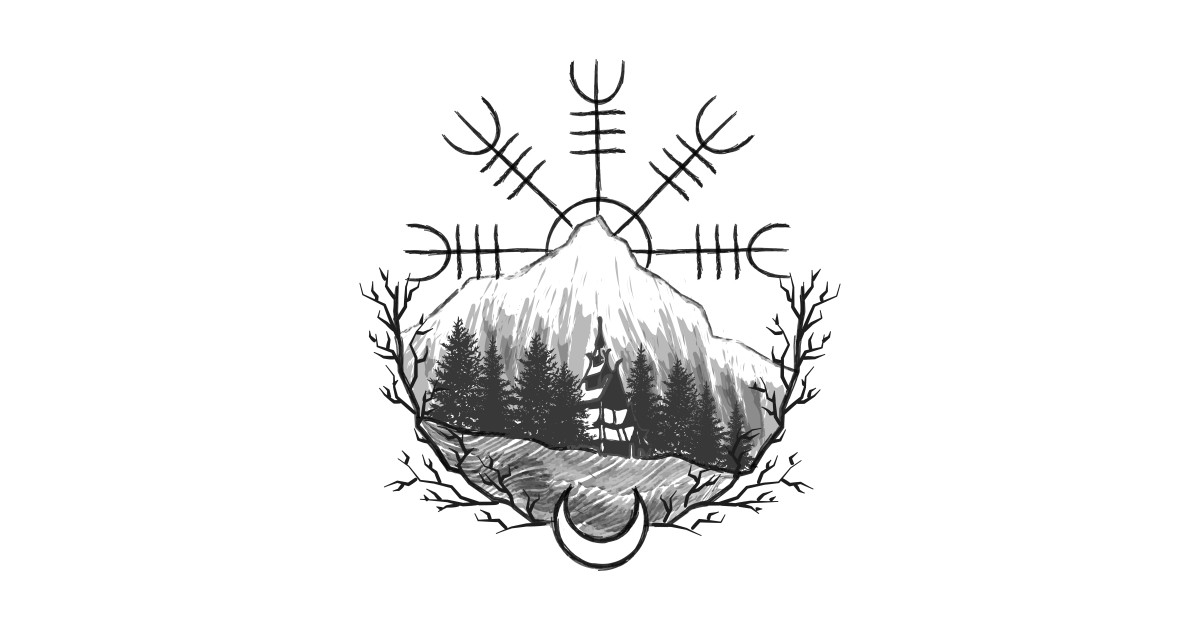
Helm Of Awe Vector at Collection of Helm Of Awe
Young smiling cheerful man in glasses feeling confident and smart with light bulb helmet meaning great ideas and ready for launching new business illustration. of 5. Choose from 245 Helm Of Awe stock illustrations from iStock. Find high-quality royalty-free vector images that you won't find anywhere else.

"Norse Aegishjalmur Helm of Awe Blue" by Ricky Barnes Redbubble
The Helm of Awe is a pagan symbol that consists of eight spikes surrounding the circular shape called the Aegishjalmur or Helm of Awe. The Nordic people believed in the existence of magic or Seidr. Viking women were known to wear the Helm of Awe. These women who practiced magic, called Völva, technically predated the Viking age.

The Helm of Awe Helm of awe tattoo, Viking tattoos, Norse tattoo
The Helm of Awe is considered an Icelandic magical stave. The Helm of Awe is made up of a circle surrounded by eight spikes or z-runes as its arms. This rune is called Algiz, from the Elder Futhark runic alphabet. It has the transliteration of the letter "z." This magical stave is also known as the Helm of Terror, Ægishjálmur in the Icelandic.
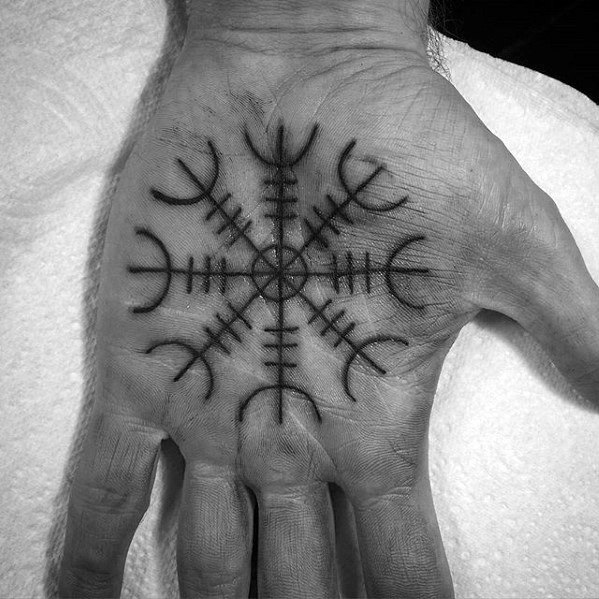
Top 37 Helm of Awe Tattoo Ideas [2021 Inspiration Guide]
The name Aegishjalmur translates to 'helm of awe' and is a famous symbol worn in Norse mythology. The 'helm' refers to the shape of the symbol, which can be made using two hands. If you extend your arms out, palms down, and place one hand on top of the other, this is the basic shape. This symbol was commonly used as a protective charm.

Viking Symbols Power, Protection and Magic History
The Helm of Awe is such a sacred symbol from where you can draw great strength from. I draw it often on papers, carve it in candles, and imagine it in meditation. I call on it when I need extra protection from harm as well as for overcoming resistance in things I am currently working on. Years ago I

Helm of Awe Wszystkie Symbole Baza znaków i ich znaczeń Norse
An article by AleHorn - Custom Engraved Viking Drinking Horns This symbol is called the Ægishjálmrm or more commonly, the Helm of Awe. Helm of Awe For the ultimate protection, the Norse (particularly women) would draw this symbol between their eyes on their forehead. And of course, to make things even more metal, the Helm of Awe worked best when it was inscribed with either blood or spit.

Vegvisir Svg Helm of Awe SVG Viking Compass Svg Viking Etsy Viking
In this video, we will explore the origin of the helm of awe. I will show you all of the sources that we have available, and I will draw some conclusions abo.
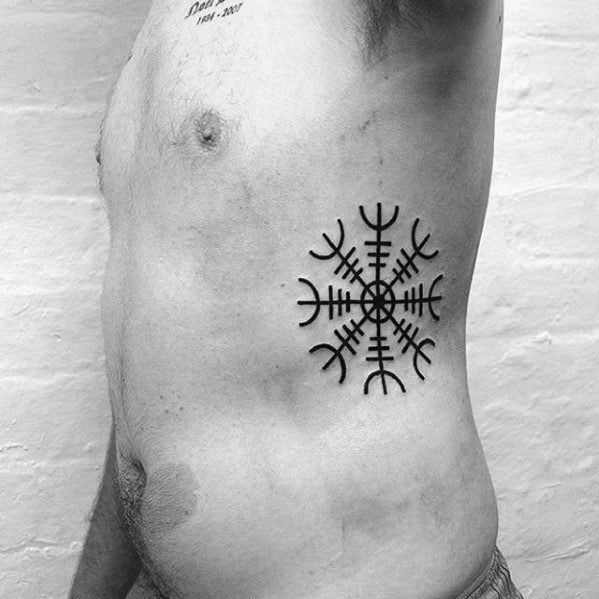
Top 37 Helm of Awe Tattoo Ideas [2021 Inspiration Guide]
Helm of Awe is a magic spell. We have to stop thinking about the Helm of Awe as just a symbol to be drawn onto the forehead because it is more than that, it is a spell that can be used as protection. According to Stephen E. Flowers, "the symbol does not just protect the head of the wearer, but, instead, it protects the entire being.
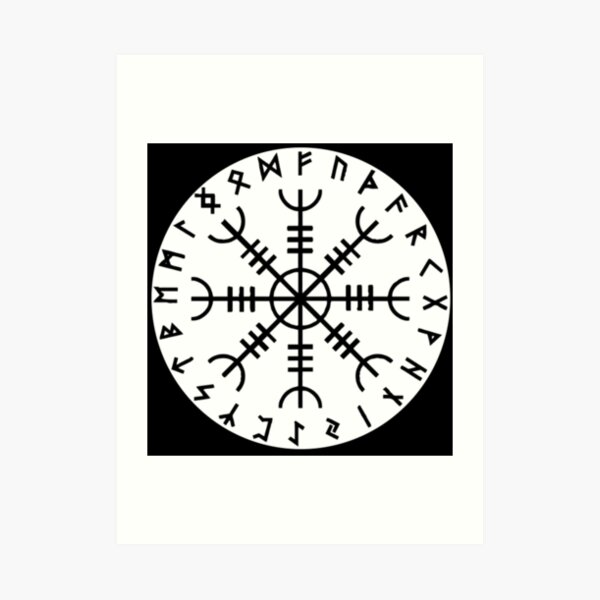
Helm Of Awe Art Prints Redbubble
The Helm of Awe symbol is representative of the ability to strike fear into your enemy and can be conceived of as a magical shield. Over time, however, the symbol has been used elsewhere and new meanings have appeared. Neopagans in Iceland Will Build the First Temple to Thor and Odin in 1000 Years.

"helm of awe drawing" Sticker for Sale by Hunrech Redbubble
Fafnir and the Helm of Awe. The most famous user of the Helm of Awe was Fafnir. He was a dwarf, son of King Hreidmar. He, and all his family members, were sorcerers that also had the power to shapeshift. Fafnir's father was incredibly wealthy, and Fafnir, as the strongest of the kings three sons, was responsible for guarding the treasure.

"helm of awe drawing" Poster for Sale by Hunrech Redbubble
The Helm of Awe (Icelandic: Ægishjálmur), a magical symbol (stave) recorded in an Icelandic manuscript in the 1600s. The term is attested in the Old Norse poem Fáfnismál (1200s) in the context of the fight between the hero Sigurd and the dragon Fáfnir, when before the final blow, the dragon mentions bearing an øgishjalm (the helmet of the frightener or, if spelled with æ, the helmet of.
Helm of awe aegishjalmur or egishjalmur icon black color vector I flat
By bearing the Helm of Awe, the user was thought to draw upon the symbol's inherent power, allowing them to face challenges with confidence and resolve. The Aegishjalmur's enduring presence in Icelandic magical tradition underscores its deep cultural significance and the long-standing belief in its protective powers. Today, it remains a.